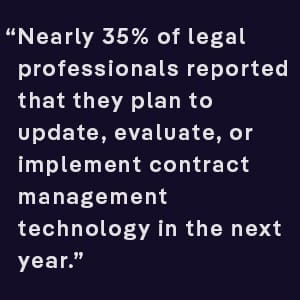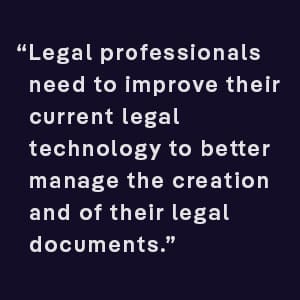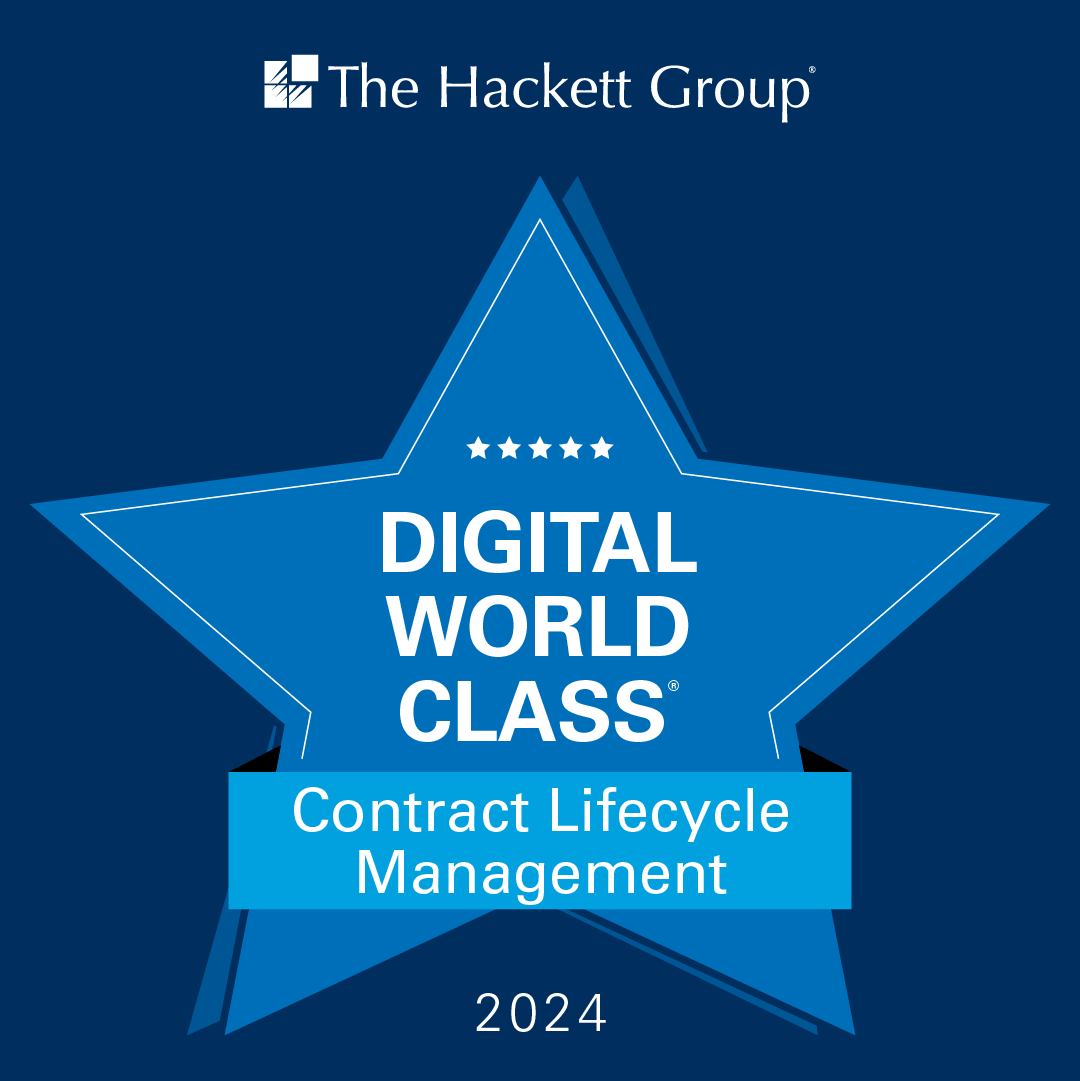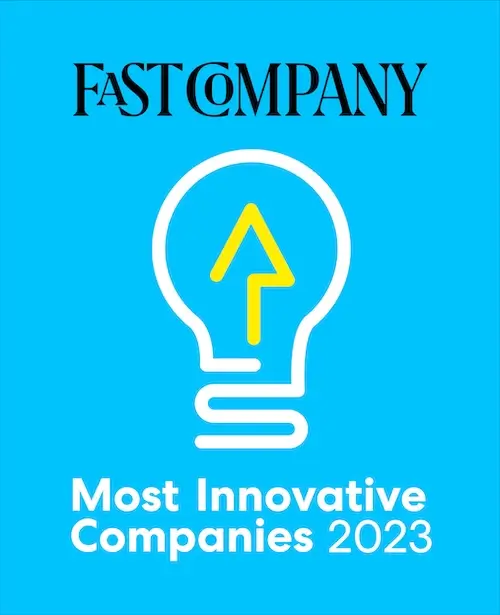There’s no question that today’s corporate legal departments are under pressure to ‘do more with less.’ (For instance, the average Fortune 1000 company deals with 20,000 to 40,000 agreements at any given moment. And it’s not humanly possible to manage this volume — with a great degree of effectiveness!)
As it happens, the imperative of ‘doing more for less’ falls under the mandate of general counsel and law department operations. The latter is charged with helping corporate legal departments act more like other business units, as the 14th Annual Law Department Operations Survey demonstrates. (The oldest and most comprehensive law department operations survey was created by the Blickstein Group to provide law departments with a platform to benchmark themselves. It also shines a light on the emerging profession of law department management.)
In the 2021 Law Department Operations Survey, “Navigating in the Era of Doing More With Less,” nearly 35 percent of legal professionals reported that they plan to update, evaluate, or implement contract management technology in the next year. Interestingly, they prioritized this over other software identified in the survey but revealed that pre-and post-execution contract management technology needs to be more efficient and effective than ever before.
Legal professionals simply need to improve their current legal technology to better manage the creation, execution, storage, and analysis of their legal documents. They need advanced digital tools to overcome contracting challenges and, in turn, show their value to the enterprise. (Actually, this tracks what survey LDO survey respondents see as the most valuable data in their contract lifecycle management (CLM) processes: deviation of contract terms, contract value, and obligations, as well as turnaround time and cycle time to signature.)
But how do they go about choosing the right contract management tools for legal departments and operations?
Define Your Contract Management Needs
For starters, think about your organizational needs. Here, you will want to account for the current state of your contract management and business profile, as well as list the objectives and strategies of the legal team. Decide what areas consume the most effort and resources, and articulate how potential contract management software will impact the same. On top of that, analyze your company’s size, geographic footprint, and industry, not to mention the growth trajectory of the business.
Assess the CLM Solutions on the Market
Once your organizational needs have been defined, you can begin to examine all of the CLM solutions on the market. Think about your present use cases and the depth of the system you require. Then try to imagine your future needs. As you start reviewing vendors, consider employing a framework that includes the following dimensions:
- Product functionality (What breath of functionality do they offer)
- Implementation support (How do they help with software deployment, legacy contract migration, legal AI engineering, and enterprise software integration?)
- Value delivery (What is their tactical plan to help you reach your ROI?)
- Customer retention (How many customers have they retained and for how long?)
- Funding level and business history (When were they founded and what have their funding rounds been like?)
Get the Entire Value of Contract Management Tools
Here’s the good news. As you go through the four common stages of digital transformation, legal tech adoption grows even easier and gives increasingly higher returns. The first phase simply involves a central digital repository that facilitates contract digitization efforts. The second is marked by the adoption of legal automation that lends end-to-end operational support.
At the third stage, artificial intelligence (AI) is embedded in CLM systems and leveraged for legal review, analysis, and reporting. And at the fourth and final stage, digital tools are extended across one legal platform, and such transformative technology is spread to all legal functions, like claims and IP portfolio management. (If you select a system that has this level of automation and grows along with your business, you won’t have to look for another system in the near future!)
When everything has been considered, the most unified legal platform greatly enhances the functionalities and capabilities of legal departments and operations. It provides much more control over contracts and other legal documents, not to mention a much deeper understanding of your organization’s commitments (As an added bonus, legal platforms give you that feeling of having a ‘finger on the pulse’ of the business!)
To see the entire 2021 Law Department Operations Survey Report, click here. And to learn more about how to view the CLM market and choose your contract management tools, download our useful guide.
Author:

Jerry Levine
Connect with us on Linkedin











